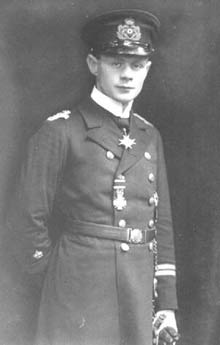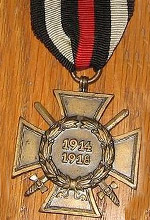Decorations
Honor Cross for Combatants
Ehrenkreuz für Frontkämpfer
| The Ehrenkreuz für Frontkämpfer (Honor Cross for Combatants - or the Hindenburg Cross) was instituted on 13 July 1934 by the German Reichspräsident Paul von Hindenburg. It was awarded retroactively to the veterans of the Imperial German military who had fought at the front during World War I. The vast majority were officially distributed in late-1934 to early-1936 and were accompanied by an award certificate. The most common certificate was a pre-printed form about 13 1/2cm x 17 1/2cm which had their typed personal data and the stamped seals varied according to issue authority - normally the local Polizeipräsident - and the Cross was issued in a small (roughly 4cm x 8cm) brown envelope. After the annexation of Austria in 1938, WWI veterans of that country were also deemed eligible under the same terms as the German veterans. By many estimates, a total of approximately 6,250,000 Honor Crosses for Combatants were awarded. It came in three versions:
The medal was designed by Eugene Godet, its shape is similar to the Iron Cross (although smaller in size), in the center of the obverse are the dates of the First World War (1914–1918) surrounded with a wreath of oak leaves, the reverse of the medal in plain. A variation with an anchor in the center, and referred to as the Naval Cross, was issued to veterans of the Imperial German Navy. |
| Commander | Date | Command | |||
|---|---|---|---|---|---|
| Kpt. | Arnauld de la Perière, Lothar von | ||||
| Georg, Carl-Siegfried Ritter von | |||||
| Kpt. | Heimburg, Heino von | ||||
3 officers decorated with Honor Cross for Combatants (Ehrenkreuz für Frontkämpfer) located.
Note: This listing is still being compiled and some recipients might be missing.


